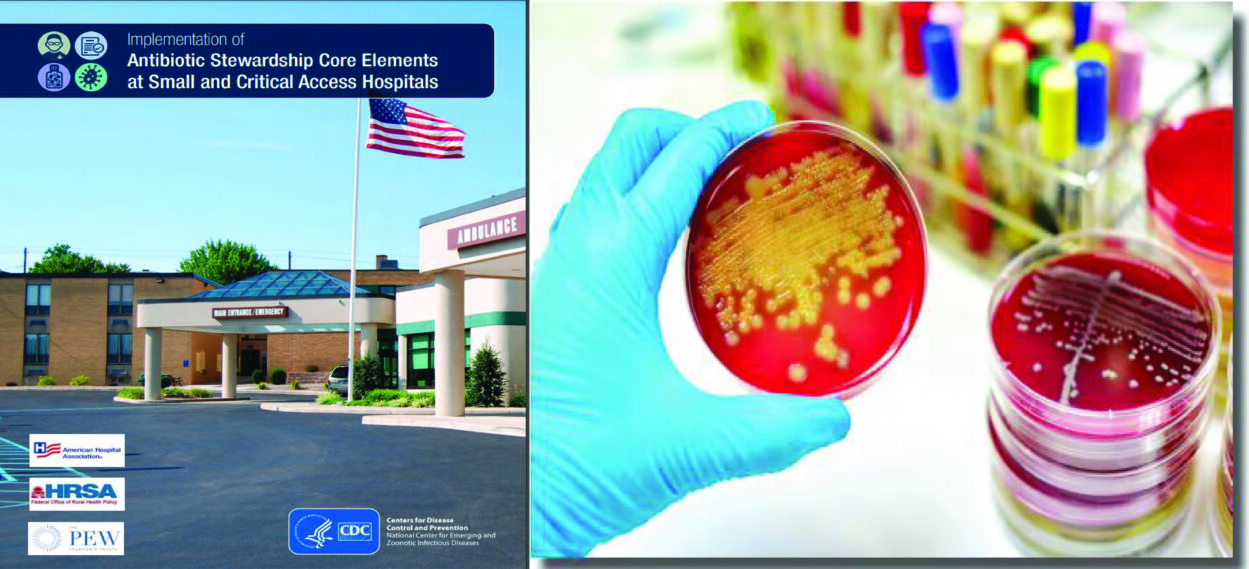Establishing Antimicrobial Stewardship Programs in Small and Critical Access Hospitals

 In 2014, the CDC published The Core Elements of Hospital Antibiotic Stewardship Programs to assist acute care facilities implement antimicrobial stewardship program (ASP). While these efforts were relatively successful in hospitals with more than 50 beds (>50% were compliant with all seven ASP core elements), only 26% of hospitals with 25 beds or less had implemented all core elements.
In 2014, the CDC published The Core Elements of Hospital Antibiotic Stewardship Programs to assist acute care facilities implement antimicrobial stewardship program (ASP). While these efforts were relatively successful in hospitals with more than 50 beds (>50% were compliant with all seven ASP core elements), only 26% of hospitals with 25 beds or less had implemented all core elements.
In response to this disparity based on hospital size, the CDC published The Implementation of Antibiotic Stewardship Core Elements at Small and Critical Access Hospitals to assist these smaller acute care facilities implement stewardship activities. While the core elements (i.e., leadership support, accountability, drug expertise, action, tracking, reporting, and education) in this new document are identical to those in larger facilities, more examples are provided on how to fulfill each core element. The goal of this document was to provide more small facility-specific options for ASP implementation which typically have limited resources to devote to antimicrobial stewardship efforts.
For instance, in order to fulfill the drug expertise core element requirement, the new document recommended seeking expertise through remote consultation or by forming multi-hospital improvement collaboratives. For the tracking core element, this document recommended performing medication use evaluations to assess the use of specific antibiotics such as piperacillin/tazobactam, carbapenems (e.g., meropenem), IV vancomycin, and fluoroquinolones (e.g., ciprofloxacin).
In the spring of 2017, using the antimicrobial stewardship content expertise from UNMC/Nebraska Medicine, Nebraska ASAP partnered with 1 small and 4 critical access hospitals to guide and assist the implementation of antimicrobial stewardship programs in these facilities. The partnership with each facility began with the signing of commitment letter, followed by self-evaluation of the level of antimicrobial stewardship activities within the facility. Recommendations for specific antimicrobial stewardship activities were provided after an intense half-day onsite evaluation of the current level of activities by the ASAP medical director and pharmacy coordinator. ASAP personnel has continued to collaborate with participating facilities to assist with implementation and to evaluate progress with execution of the recommended antimicrobial stewardship activities.
Successes reported by participating facilities include establishment of formal antimicrobial stewardship committees; obtaining dedicated time for antimicrobial stewardship activities and financial support for ASP certificate training; implementation of daily antibiotic review process, syndromic treatment guidelines, and requirement for indication for all antibiotic orders; systematic tracking and trending of antimicrobial use data; reporting antimicrobial use data to antimicrobial stewardship and hospital quality committees; and education of facility prescribers and staff on antimicrobial stewardship and appropriate use of antimicrobials.
ASAP staff continues to engage with these institutions in the development and/or further augmentation of facility antimicrobial stewardship programs. In addition, with continued efforts to build facility antimicrobial stewardship program, reductions in the use of antimicrobials and antimicrobial resistance are anticipated.



